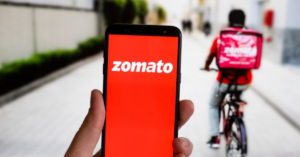This weekly quiz from YS tests your domain knowledge, business acumen, and lateral thinking skills (see the previous edition here). In this 38th edition of the quiz, we present issues tackled by real-life entrepreneurs in their startup journeys.
`
What would you do if you were in their shoes? At the end of the quiz, you will find out what the entrepreneurs and innovators themselves actually did. Would you do things differently?
Check out YS’s Book Review section as well, with takeaways from over 335 titles on creativity and entrepreneurship, and our weekend PhotoSparks section on creativity in the arts.
Q1: Electric vehicles
Lack of awareness, gaps in manufacturing capabilities, and inadequate charging infrastructure are some factors holding back the growth of electric vehicles in many emerging markets. There are two other key factors that need to be plugged in (literally) to make EVs succeed–what are they?
Q2: Handicrafts
Many rural artisans are hampered in their business prospects by lack of access to current technology practices and awareness of fast-changing design trends in target markets. Some do not know about the competitive landscape and how to differentiate from others. There is one more critical gap–what is it, and how can it be bridged?
Q3: The finance opportunity
Much attention has understandably focused on the fintech opportunity for payment systems such as mobile wallets, or financial inclusion through micro-credit. But there’s another wave that is bringing together financial and non-financial players–what is it, and how does it work?
Q4: Business relationships
In a world of swift and tough competition, it is important for founders to hit the ground running and build relationships with customers and developers to get the product out of the door as soon as possible. But there are other types of relationships that are also key for entrepreneurs–what are they?
Q5: Route to success
The route to success is paved with quality and best practices for product/service development, market outreach, and customer engagement. Much can be learnt from what has already worked in local and related markets. But there’s also another source of learning from what hasn’t worked–how can that be useful?
Answers!
Congratulations on having come this far! But there’s more to come–answers to these five questions (below), as well as links to articles with more details on the entrepreneurs’ solutions. Happy reading, happy learning–and happy creating!
A1: Electric vehicles
“The customer journey for commercial electric vehicles in India is quite broken…there’s a severe lack of knowledge around the purchase, maintenance, and resale of EVs,” explains Xitij Kothi, Co-founder, Vidyut Tech.
There are also inadequate financing options, since this is a new area and many financiers are wary of trial-and-error testing of underwriting parameters. There is also lack of visibility of value during resale, which holds back secondary markets for EVs. Read more about EV dynamics here.
A2: Handicrafts
“There are more than 21 lakh weavers and 14.5 lakh artisans in the [North-East] region, but the right kind of market linkage has been missing,” observes Rajiv Kumar Singh, MD, Handicrafts and Handloom Development Corporation (NEHHDC).
Etsy, the global marketplace for creative goods, has partnered with them to support small sellers, weavers and artisans and provide market access and enablement support. They can explore entrepreneurship on their own terms and reach both domestic and global buyers. Ross LaJeunesse, VP, Public Policy and Advocacy, Etsy, says: “Etsy’s vision across the world is to ‘Keep Commerce Human.’” Read more about the MoU impacts here.
A3: The finance opportunity
“Embedded finance will be the core around which a lot of new-age B2C customer interactions will happen. Non-fintechs will want to build stickiness with their customers and offer things beyond their core offerings. This will lead to a lot of transaction-specific financial products,” observes Nakul Saxena, Head, Investor Relations at LetsVenture.
Many regard the embedded finance sector as the next big wave in fintech, which includes lending, insurance and investment. VCs will be interested in founders who have clarity on customers, offerings, and route to monetisation, according to Anuradha Ramachandran, Investments Director at Flourish Ventures. Read more about embedded finance opportunities like BNPL here.
A4: Business relationships
“Building long term relations is probably one of the most important things that a founder can do for themselves and their companies,” advises Akshay Chaturvedi, Founder and CEO of Leverage Edu. He recommends that such relationships be built with seasoned entrepreneurs, peers, industry experts, users, and others.
“Networking allows an entrepreneur to explore the uncharted path,” adds Vineet Toshniwal, Founder and CEO of BizzO. Read more about networking opportunities and techniques for connecting to investors, future employees, and partners here.
A5: Route to success
“Every failure will teach you something so take every hurdle as a learning lesson. Let the struggle motivate you and make your resolve even stronger,” advises Akanksha Arora, Founder and CEO, Tribe Amrapali.
“With COVID-19, we faced some grave challenges. Tribe Amrapali’s physical stores were shut for a very long duration. There was also a lack of physical events taking place, weddings were put on hold,” she recalls. Read about how this company still ploughed ahead to success here.
YS has also published the pocketbook ‘Proverbs and Quotes for Entrepreneurs: A World of Inspiration for Startups’ as a creative and motivational guide for innovators (downloadable as apps here: Apple, Android).










